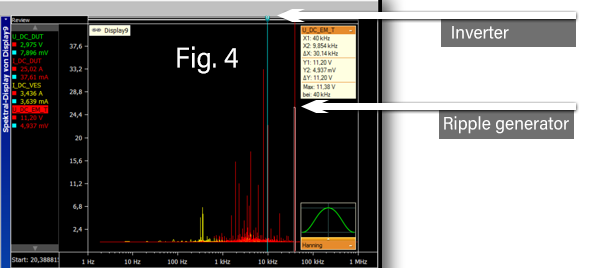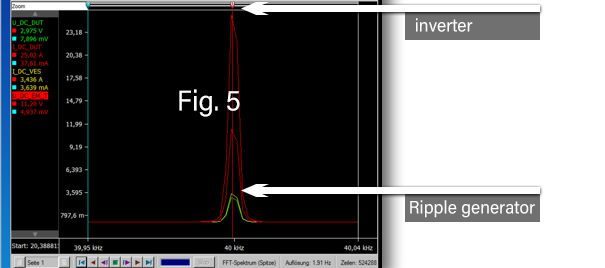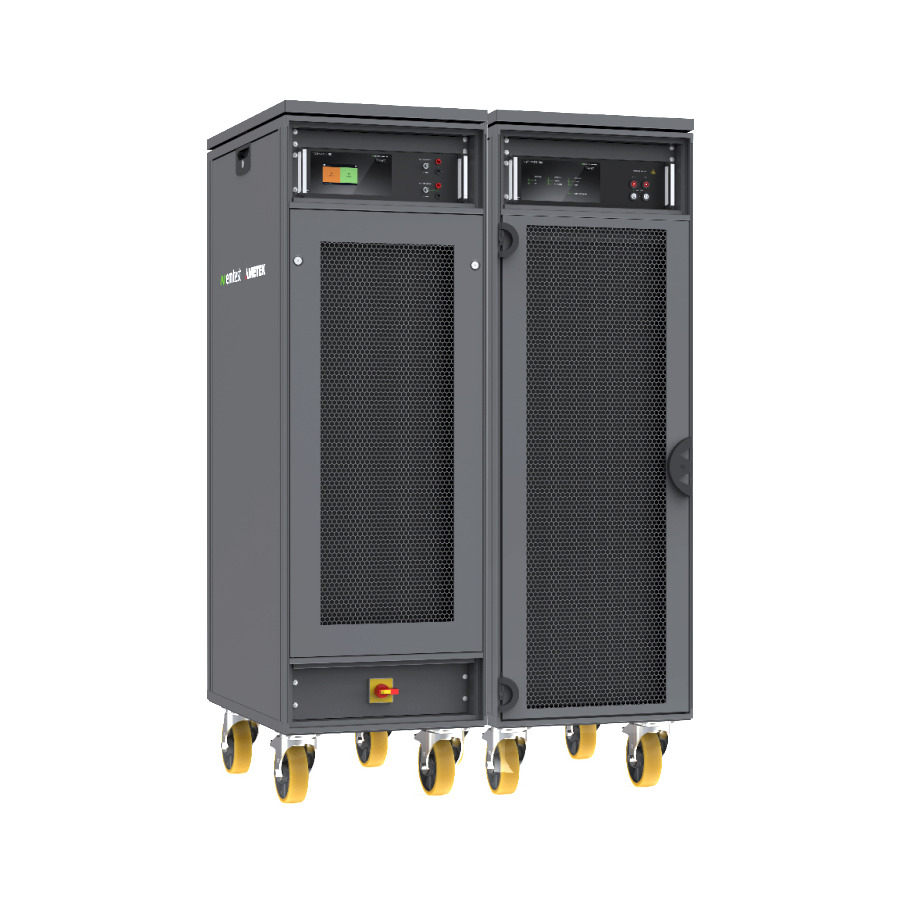When using a ripple generator, how can I separate the ripple disturbance produced by the EUT when performing EMC immunity tests?
The Ripple NX utilizes a frequency-selective measurement technique to effectively eliminate undesired disturbances. This feature proves particularly advantageous when conducting tests on motor inverters or other components that produce their own ripple or disturbances during operation.
When the transistors of the H-bridge in an inverter switch, they generate a pulsating current flow. The frequencies of these pulsed currents consist of a combination of the fundamental switching frequency and its harmonics. As a result, there is a noise-like presence of current and voltage at the input of the inverter. The desired disturbance signal (ripple) and the noise-like disturbance generated by the inverter overlap. If measured using a broad-spectrum device like an oscilloscope or multimeter, the measured signal will be the sum of these two signals (RMS or peak). However, by employing a narrow-band or frequency-selective measurement technique, the measurement is specifically tuned to the frequency of the desired disturbance signal while filtering out other frequencies.
In closed-loop mode, the ripple generator regulates the disturbance signal to match the set value. To achieve this, the disturbance signal is measured at the inverter input. If measured in wideband (RMS), the sum of the wanted disturbance signal and the disturbance generated by the inverter is measured and taken as the actual value. The result is that the wanted ripple signal might be smaller than the set value because of the contribution of the inverter disturbance.
On the other hand, the narrow-band measurement technique (frequency selective) employed by Ripple NX filters out undesired disturbances stemming from the inverter. The measured value then accurately represents the intended disturbance signal. This approach means that the generated disturbance signal precisely matches the set amplitudes.
Example
Figure 4 displays an illustrative spectrum showcasing the measurement of an inverter operating at a switching frequency of 9 kHz, accompanied by a superimposed ripple at 40 kHz.

Figure 5 provides a closer view of the spectrum, offering a more detailed perspective.

By employing frequency selective measurement, the amplitudes of the generated disturbance signal precisely align with the desired set values specified in the test plan or standard.
The Ripple NX, by default, utilizes frequency selective measurement. However, if necessary, this feature can be disabled, allowing for wideband measurement.
It is important to note that these differences in measured values may exist between the Ripple NX (frequency selective) and other measurement instruments, such as data loggers, multimeters, or oscilloscopes. Nonetheless, employing a spectrum analyser centred around the generated disturbance frequency would yield the same outcome.
Content Source: https://www.ametek-cts.com/blog/2023/june/ripple-nx-frequency-selective-measurement-technique
Related Products

Ripple NX
The Ripple NX is a high-power ripple generator that is used to perform ripple immunity tests. It offers the power to test high power high voltage components i.e. electric drives, high voltage batteries, DC-DC converters, on-board chargers and other high voltage components.






